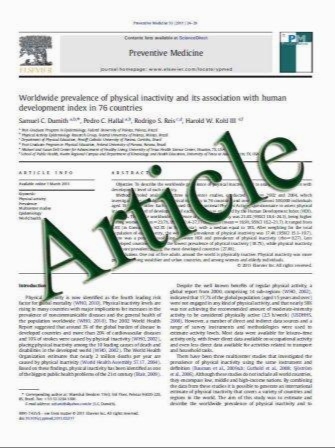Continuous intravenous infusion of prostaglandin E1 improves myocardial perfusion reserve in patients with ischemic heart disease assessed by positron emission tomography: a pilot study
- نوع فایل : کتاب
- زبان : انگلیسی
- مؤلف : Chi-Lun Huang Yen-Wen Wu Shoei-Shen Wang Chuen-Den Tseng Fu-Tien Chiang Kwan-Lih Hsu Chii-Ming Lee Kai-Yuan Tzen
- چاپ و سال / کشور: 2011
Description
Objective Recent investigation has demonstrated that prostaglandin E1 (PGE1) therapy increased capillary density in explanted hearts. Dynamic 13N-ammonia positron emission tomography (PET) is reliable for non-invasive measurement of myocardial blood flow and myocardial perfusion reserve (MPR). The aim of this study was to investigate the effects of PGE1 therapy during 4 weeks on reduction of myocardial perfusion abnormalities and increase of MPR in the patients with ischemic heart disease. Methods In this double-blind, placebo-controlled trial, we randomly assigned 11 patients who had symptomatic heart failure and documented myocardial ischemia to 4 weeks intravenous infusion of PGE1 (2.5 ng/kg/min; 8 patients, age 60 ± 13 years) or saline (3 patients, age 57 ± 13 years). Dynamic 13N-ammonia PET scans at rest and during adenosine stress were obtained at baseline and 12 weeks after treatment completion. Quantitative size/severity of perfusion defects and MPR change from baseline to follow-up PET were determined using a 17-segment model. Results Compared with the control group, baseline MPR in the PGE1 group was significantly lower (1.96 ± 0.78 vs. 2.71 ± 0.73; P\0.001). MPR significantly improved 12 weeks after completion of PGE1 infusion (1.96 ± 0.78 to 2.16 ± 0.77; P\0.001). In contrast, MPR declined significantly in the placebo group (2.71 ± 0.73 to 2.01 ± 0.58, P\0.001). Conclusion Four weeks of PGE1 infusion sustained MPR improvement in patients with ischemic heart disease. This may be an attractive therapeutic approach for no-option patients with severe ischemic cardiomyopathy.
Ann Nucl Med DOI 10.1007/s12149-011-0487-x Received: 28 November 2010 / Accepted: 9 March 2011


